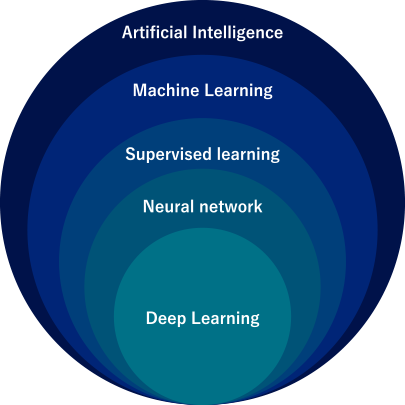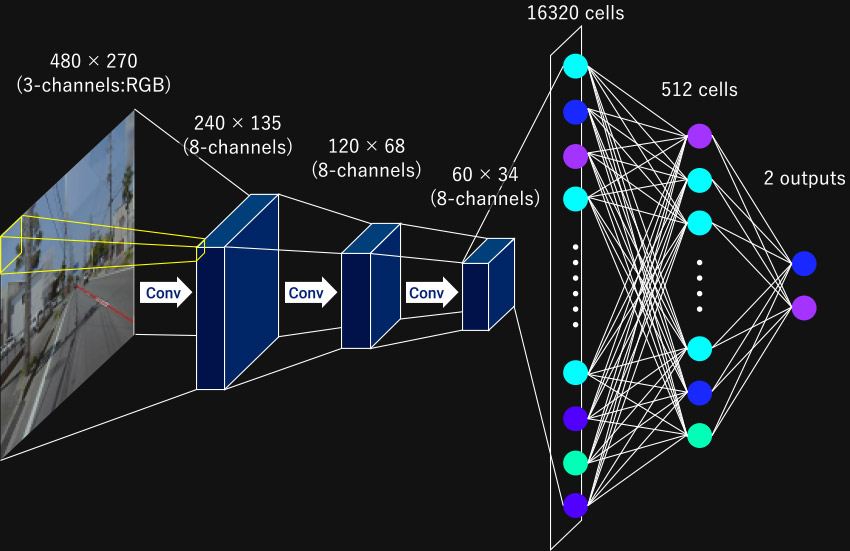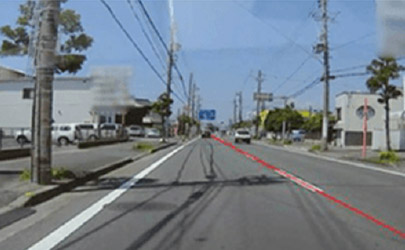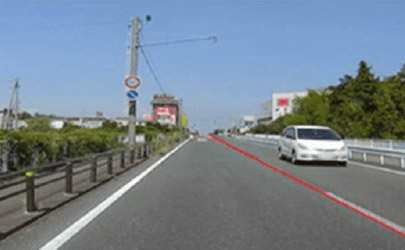Deep Learning (artificial intelligence design)
Deep learning services with business applications in mind.
In response to recent market needs, we are developing an "artificial intelligence design service." Deep learning, or deep neural networks, is becoming increasingly essential for realizing somewhat complex image recognition within artificial intelligence technology, and SANEI HYTECHS is focusing on it as well. When attempting to apply deep learning to business, several practical hurdles arise, such as "designing appropriate neural networks," "designing proper machine learning workflows," "building machine environments for machine learning," and "the labor-intensive process of annotating correct information." Our company covers all these elements, providing a comprehensive deep learning service.Addressing the "massive workload of annotating correct information"
Case studies of neural network and machine learning workflow design
Among the four practical hurdles mentioned earlier, the most challenging is the "massive workload of annotating correct information (annotation work)."
Deep learning is categorized as "supervised learning" within machine learning, requiring labeled data for training.
For example, suppose you want to create an image recognition program using deep learning to identify the position of cardboard boxes in images taken inside a factory. In this case, you need to prepare a large number of images with cardboard boxes and manually mark the location of the boxes in those images. The marks added to the images are the "ground truth." The combination of the image and the ground truth forms the "labeled data."
Deep learning is categorized as "supervised learning" within machine learning, requiring labeled data for training.
For example, suppose you want to create an image recognition program using deep learning to identify the position of cardboard boxes in images taken inside a factory. In this case, you need to prepare a large number of images with cardboard boxes and manually mark the location of the boxes in those images. The marks added to the images are the "ground truth." The combination of the image and the ground truth forms the "labeled data."

Generally, it is said that at least 100,000 images with annotated ground truth are needed to ensure practical accuracy. Depending on the use case, even more data may be required. While this number is not ordinary, it must be created manually. Securing the necessary human resources becomes a significant hurdle in implementing deep learning. To address these needs, we have established an annotation center at "Sanei Vietnam" (SANEI HYTECHS VIETNAM co., ltd.). We have a proven track record of handling large-scale requests from multiple major companies.
Development Achievements
Case studies of neural network and machine learning workflow design
An example of creating a neural network using deep learning to detect the centerlines of general roads.
The diagram below shows the structure of the designed neural network.
The diagram below shows the structure of the designed neural network.

Configuration of neural network for central line detection
It adopts the form of a CNN (Convolutional Neural Network), which is generally advantageous for image recognition, and consists of three convolution layers and two fully connected layers. In a standard CNN, a pooling layer is inserted in between; however, in this case, the design prioritizes preserving positional information as much as possible, so no pooling layer is included.
The following image shows the result of passing an actual road image through the neural network and detecting the road's centerline.
The following image shows the result of passing an actual road image through the neural network and detecting the road's centerline.
Road centerline detection results (displayed in red lines)


In this case, machine learning is performed using Chainer, a deep learning platform open-sourced by Preferred Networks (PFN).
Flexible and fast machine environment setup for machine learning
For large-scale machine learning computations, we utilize GPU machines on Amazon's cloud service, AWS. Communication with machines on AWS is done through a highly secure VPN connection, allowing design work to proceed in an environment similar to having machines in-house. Our company also specializes in IT service business and is proficient in setting up such environments.
Depending on the design content, we may opt to purchase physical machines and install them in-house instead of using cloud services. Our company has experience running dozens of workstations constantly for LSI/semiconductor design and can build environments using our hardware.
The ability to set up flexible and fast machine environments for machine learning is one of our strengths.
Depending on the design content, we may opt to purchase physical machines and install them in-house instead of using cloud services. Our company has experience running dozens of workstations constantly for LSI/semiconductor design and can build environments using our hardware.
The ability to set up flexible and fast machine environments for machine learning is one of our strengths.
-
Collaborative Design of Digital and Software (Zynq/Intel SoC)
-
Development of high-performance ADCs
- Achievements / Case | LSI Circuit Design | ADC
- Pipeline ADC / Cyclic ADC IP development
- SARADC / OS-SARADC IP development
- Delta Sigma (ΔΣ) ADC IP development
- 【Coming Soon】Development of high-performance ADC IP peripheral circuits (PGA, BGR, RCOSC)
- In-house Developed Analog IP Service
- Development of circuit boards and systems for ADC evaluation
![[Image]SANEI HYTECHS](/en/shared/img/logo_w.png)